TLR3 and TLR9 agonists improve postexposure vaccination efficacy of live smallpox vaccines
- PMID: 25350003
- PMCID: PMC4211728
- DOI: 10.1371/journal.pone.0110545
TLR3 and TLR9 agonists improve postexposure vaccination efficacy of live smallpox vaccines
Abstract
Eradication of smallpox and discontinuation of the vaccination campaign resulted in an increase in the percentage of unvaccinated individuals, highlighting the need for postexposure efficient countermeasures in case of accidental or deliberate viral release. Intranasal infection of mice with ectromelia virus (ECTV), a model for human smallpox, is curable by vaccination with a high vaccine dose given up to 3 days postexposure. To further extend this protective window and to reduce morbidity, mice were vaccinated postexposure with Vaccinia-Lister, the conventional smallpox vaccine or Modified Vaccinia Ankara, a highly attenuated vaccine in conjunction with TLR3 or TLR9 agonists. We show that co-administration of the TLR3 agonist poly(I:C) even 5 days postexposure conferred protection, avoiding the need to increase the vaccination dose. Efficacious treatments prevented death, ameliorated disease symptoms, reduced viral load and maintained tissue integrity of target organs. Protection was associated with significant elevation of serum IFNα and anti-vaccinia IgM antibodies, modulation of IFNγ response, and balanced activation of NK and T cells. TLR9 agonists (CpG ODNs) were less protective than the TLR3 agonist poly(I:C). We show that activation of type 1 IFN by poly(I:C) and protection is achievable even without co-vaccination, requiring sufficient amount of the viral antigens of the infective agent or the vaccine. This study demonstrated the therapeutic potential of postexposure immune modulation by TLR activation, allowing to alleviate the disease symptoms and to further extend the protective window of postexposure vaccination.
Conflict of interest statement
Figures


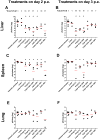

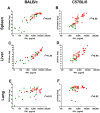
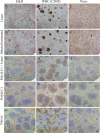
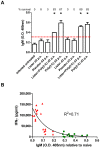
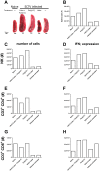
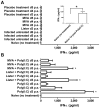
References
-
- Fenner F (1982) A successful eradication campaign. Global eradication of smallpox. Rev Infect Dis 4: 916–930. - PubMed
-
- Henderson DA (1999) The looming threat of bioterrorism. Science 283: 1279–1282. - PubMed
-
- Mortimer PP (2003) Can postexposure vaccination against smallpox succeed? Clin Infect Dis 36: 622–629. - PubMed
-
- Cross J (1821) A history of the variolous epidemic which occurred in Norwich, in the year 1819, and destroyed 530 individuals; with an estimate of the protection afforded by vaccination, and a review of past and present opinions upon chicken-pox and modified smallpox.; J EM, editor.
-
- Esteban D, Parker S, Schriewer J, Hartzler H, Buller RM (2012) Mousepox, a small animal model of smallpox. Methods Mol Biol 890: 177–198. - PubMed
Publication types
MeSH terms
Substances
LinkOut - more resources
Full Text Sources
Other Literature Sources
Medical

